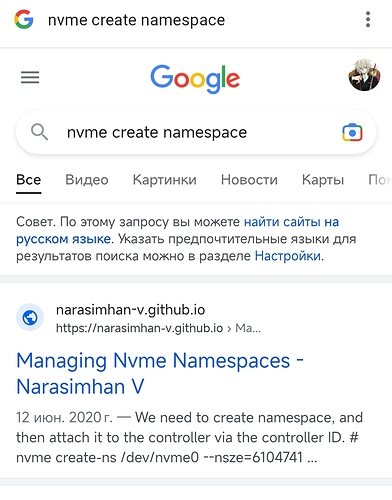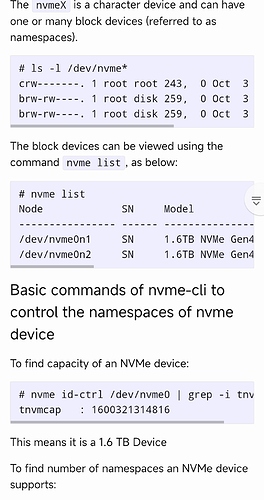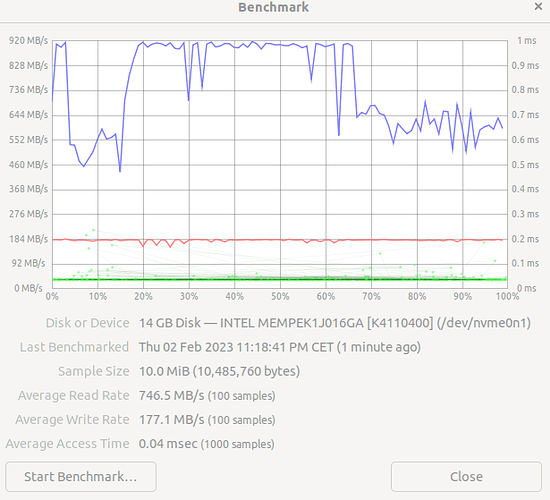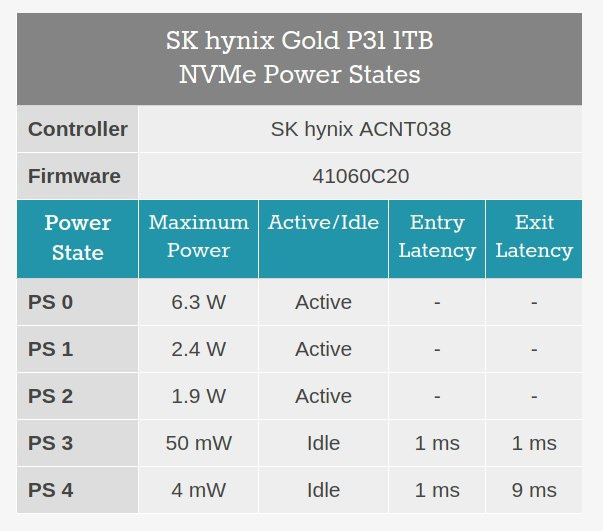Yes, I checked and indeed it shows nvme0 but nothing else. But wouldn’t be the case as well if it was just not partitioned?
Output of dmesg|grep nvme:
[ 9.118642] nvme nvme0: pci function 0000:01:00.0
[ 9.118707] nvme 0000:01:00.0: enabling device (0000 -> 0002)
[ 9.123662] nvme nvme0: could not set timestamp (16390)
[ 9.123720] nvme nvme0: Could not set queue count (16390)
[ 9.123728] nvme nvme0: IO queues not created
Output of dmesg|grep 0000:01:00
[ 8.813923] pci 0000:01:00.0: [8086:2522] type 00 class 0x010802
[ 8.813986] pci 0000:01:00.0: reg 0x10: [mem 0x00000000-0x00003fff 64bit]
[ 8.814061] pci 0000:01:00.0: reg 0x20: [mem 0x00000000-0x0000ffff 64bit]
[ 8.814104] pci 0000:01:00.0: enabling Extended Tags
[ 8.826516] pci 0000:01:00.0: BAR 4: assigned [mem 0xf0200000-0xf020ffff 64bit]
[ 8.826570] pci 0000:01:00.0: BAR 0: assigned [mem 0xf0210000-0xf0213fff 64bit]
[ 9.118642] nvme nvme0: pci function 0000:01:00.0
[ 9.118707] nvme 0000:01:00.0: enabling device (0000 -> 0002)


 normally I have a small rootfs (~8GB) so putting it to the Optane partition makes sense; then the 256GB can be used for something else, say in my case I can dedicate it for blockchain database that’s around 100GB in size, and for other type of data perhaps.
normally I have a small rootfs (~8GB) so putting it to the Optane partition makes sense; then the 256GB can be used for something else, say in my case I can dedicate it for blockchain database that’s around 100GB in size, and for other type of data perhaps.
